Elementary GLOBE Is Designed To Introduce K-4 Students To The Study Of Earth System Science. The Complete
Elementary GLOBE is designed to introduce K-4 students to the study of Earth System Science. The complete instructional unit includes:
Science-based storybooks designed to introduce students to key concepts in water, soil, clouds, seasons, aerosols, and Earth system studies.
Classroom learning activities complementing the science content covered in each storybook that are designed to further engage students in GLOBE's 5 investigation areas.
More Posts from Bigbluenasa and Others

Orion Nebula in Oxygen, Hydrogen, and Sulfur Image Credit Copyright: César Blanco González
The Orion Nebula is among the most intensely studied celestial features.The nebula has revealed much about the process of how stars and planetary systems are formed from collapsing clouds of gas and dust.
Astronomers have directly observed protoplanetary disks, brown dwarfs, intense and turbulent motions of the gas, and the photo-ionizing effects of massive nearby stars in the nebula.
2017 - Johnson Space Center Year in Review
It’s May the 4th: Are Star Wars Planets Real?
Look at what we’ve found so far.
Is your favorite Star Wars planet a desert world or an ice planet or a jungle moon?
It’s possible that your favorite planet exists right here in our galaxy. Astronomers have found over 3,400 planets around other stars, called “exoplanets.”
Some of these alien worlds could be very similar to arid Tatooine, watery Scarif and even frozen Hoth, according to NASA scientists.
Find out if your planet exists in a galaxy far, far away or all around you. And May the Fourth be with you!
Planets With Two Suns

From Luke Skywalker’s home world Tatooine, you can stand in the orange glow of a double sunset. The same could said for Kepler-16b, a cold gas giant roughly the size of Saturn, that orbits two stars. Kepler-16b was the Kepler telescopes’s first discovery of a planet in a “circumbinary” orbit (that is, circling both stars, as opposed to just one, in a double star system).
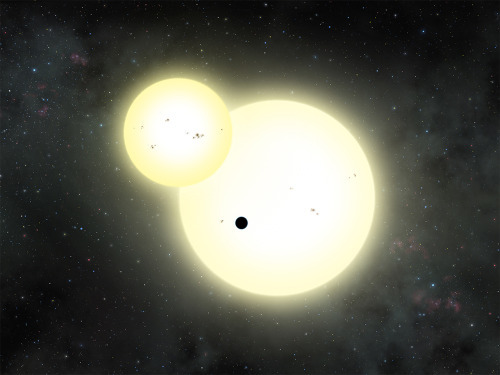
The best part is that Tatooine aka Kepler-16b was just the first. It has family. A LOT of family. Half the stars in our galaxy are pairs, rather than single stars like our sun. If every star has at least one planet, that’s billions of worlds with two suns. Billions! Maybe waiting for life to be found on them.
Desert Worlds

Mars is a cold desert planet in our solar system, and we have plenty of examples of scorching hot planets in our galaxy (like Kepler-10b), which orbits its star in less than a day)! Scientists think that if there are other habitable planets in the galaxy, they’re more likely to be desert planets than ocean worlds. That’s because ocean worlds freeze when they’re too far from their star, or boil off their water if they’re too close, potentially making them unlivable. Perhaps, it’s not so weird that both Luke Skywalker and Rey grew up on planets that look a lot alike.
Ice Planets

An icy super-Earth named OGLE-200-BLG-390Lb reminded scientists so much of the frozen Rebel base they nicknamed it “Hoth,” after its frozen temperature of minus 364 degrees Fahrenheit. Another Hoth-like planet was discovered last month; an Earth-mass icy world orbiting its star at the same distance as Earth orbits the sun. But its star is so faint, the surface of OGLE-2016-BLG-1195Lb is probably colder than Pluto.
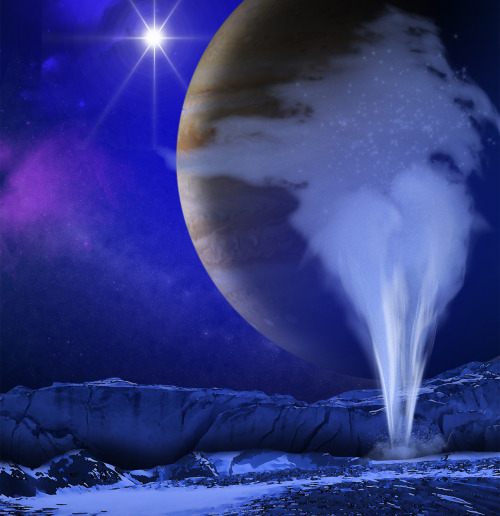
Forest worlds

Both the forest moon of Endor and Takodana, the home of Han Solo’s favorite cantina in “Force Awakens,” are green like our home planet. But astrobiologists think that plant life on other worlds could be red, black, or even rainbow-colored!
In February 2017, the Spitzer Space Telescope discovered seven Earth-sized planets in the same system, orbiting the tiny red star TRAPPIST-1.

The light from a red star, also known as an M dwarf, is dim and mostly in the infrared spectrum (as opposed to the visible spectrum we see with our sun). And that could mean plants with wildly different colors than what we’re used to seeing on Earth. Or, it could mean animals that see in the near-infrared.
What About Moons?
In Star Wars, Endor, the planet with the cute Ewoks, is actually a habitable moon of a gas giant. Now, we’re looking for life on the moons of our own gas giants. Saturn’s moon Enceladus or Jupiter’s moon Europa are ocean worlds that may well support life. Our Cassini spacecraft has explored the Saturn system and its moons. Watch the video and learn more about the missions’s findings.
And Beyond

The next few years will see the launch of a new generation of spacecraft to search for planets around other stars. TESS and the James Webb Telescope are slated to launch in 2018, and WFIRST in the mid-2020s. That’s one step closer to finding life.

You might want to take our ‘Star Wars: Fact or Fiction?’ quiz. Try it! Based on your score you may obtain the title of Padawan, Jedi Knight, or even Jedi Master!
You don’t need to visit a galaxy far, far away to find wondrous worlds. Just visit this one … there’s plenty to see.
Discover more about exoplanets here: https://exoplanets.nasa.gov/
Make sure to follow us on Tumblr for your regular dose of space: http://nasa.tumblr.com
The title says it all...MAKING Video Games...FOR NASA! :)

M8 M16 M17 And M20 Gems Of The Summer Milky Way by Martin Campbell on Flickr.
Read about the 2015 HESTEC conference and the educators workshops we conducted on-site for the High School STEM Educators in attendance. @NASAEPDC @NASAEDU
What’s Up for April 2016?
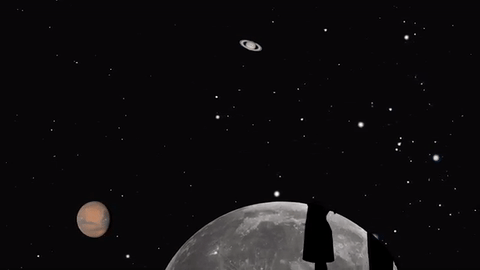
Jupiter, Mars, the Lyrid meteor shower and 2016’s best views of Mercury are all visible in the sky this month.
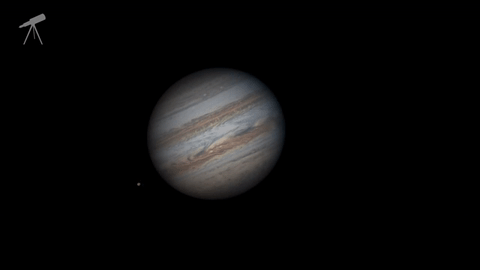
Jupiter, where our Juno mission will begin orbiting on July 4, continues to shine almost as brightly this month as last. And eagle-eyed telescope viewers will see a transit, a shadow transit, an occultation and an eclipse of Jupiter’s moons- all in one night: April 6-7.
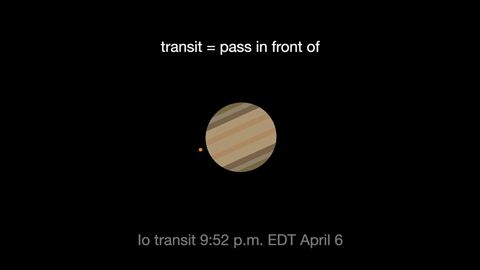
Io transits first, crossing the planet beginning at 9:52 p.m. EDT. It’s shadow can be seen less than an hour later.
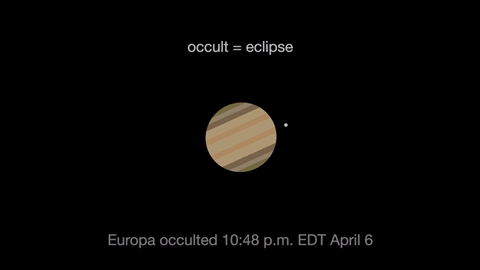
Next Jupiter occults, or eclipses, Europa as Europa slips behind the giant planet at 10:48 p.m. EDT. At 3 a.m. Europa reappears from its eclipse, dramatically leaving the shadow of Jupiter.
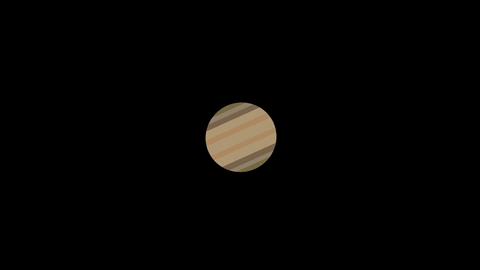
Ganymede transits the planet beginning at 1:01 EDT April 7.
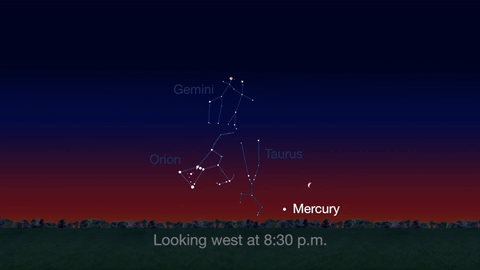
Check out the other planets in April, too! Mercury is always a challenging object to view, but this month you can spot it after sunset about 10 degrees above the horizon. Through a telescope you can see its phase. It will appear like a tiny crescent moon, with about 1/3 of its disk illuminated.
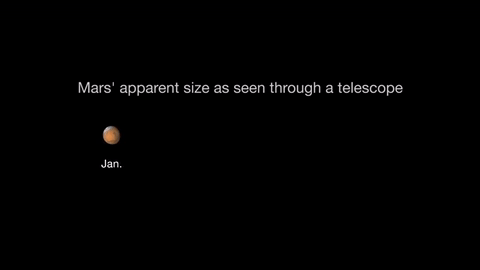
Mars is finally visible before midnight this month. It rises in the southeast at about 10 p.m. by the end of April. The best observing of Mars will be when it is highest in the sky. This means a few hours before dawn. Its brightness and apparent size increase dramatically this month. By month’s end, Mars appears nearly twice as bright as at the beginning of the month.
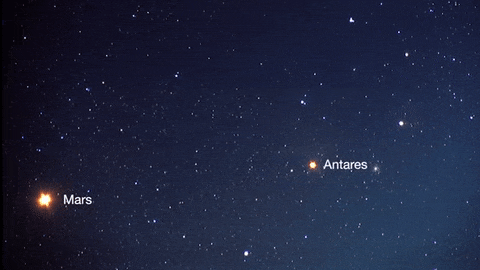
About mid-month you’ll see Mars near its rival in the sky: the similar-colored red supergiant star Antares. The name “Antares” means “equal to or rival of Mars”.
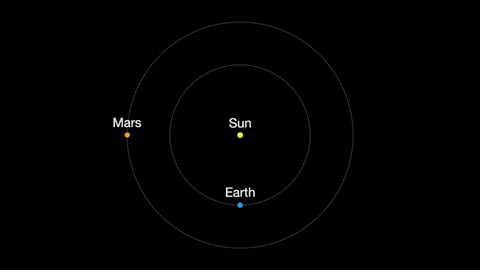
Earth moves almost twice as fast as Mars does, so it often passes Mars in their race around the sun. This causes “retrograde motion”: an illusion we see from our viewpoint on Earth.
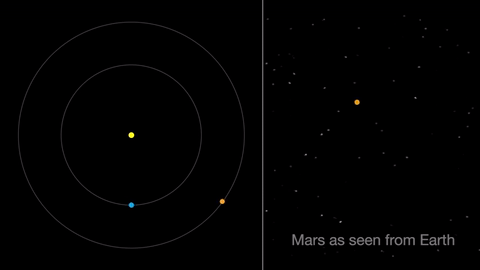
Retrograde motion happens as Earth catches up to Mars, causing Mars to appear slow to slow its eastward motion against the stars. After a few days, when Earth has overtaken Mars, the Red Planet seems to move westward. Eventually, Earth moves far enough around its orbit that Mars appears to be moving eastward again.
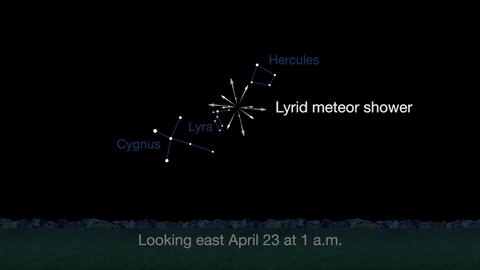
April features one meteor shower, the Lyrids. This year the Lyrids are marred by the full moon. The best time to view will be just before dawn on April 23, when the constellation Lyra is overhead and the moon will be near to setting.
With all of these great things to spot in the sky this month, be sure to get outside and look up!
Make sure to follow us on Tumblr for your regular dose of space: http://nasa.tumblr.com

Designing a NASA mission using the engineering design process is just part of a day's work for educators @nasajohnson attending our #nasamei2017 (at NASA - Johnson Space Center in Houston, TX)
(via https://www.youtube.com/watch?v=wEHNfIUA6gM)
Solar System: Things to Know This Week
From observing our moon to Saturn’s mini solar system …here are a few things you should know about our solar system this week:
1. What a Long, Strange—and Revealing—Trip It’s Been

As the Cassini mission builds toward its climactic “Grand Finale,” we’re taking a look back at the epic story of its journey among Saturn’s mini-solar system of rings and moons.
+ Traverse the timeline
2. Our Very Own Moon

Unlike Saturn, Earth has only one moon. Let’s celebrate it! International Observe the Moon Night (InOMN) is a worldwide, public celebration of lunar science and exploration held annually. On Oct. 8, everyone on Earth is invited to observe and learn about the moon together, and to celebrate the cultural and personal connections we all have with it.
+ Join in
3. What’s Up, October?

Even more about Earth’s moon is the subject of this month’s video guide for sky watchers and includes a look at the moon’s phases and when to observe them. Also featured are a guide to upcoming meteor showers and tips on how to catch a glimpse of Saturn.
+ Take a look
4. Nine Lives

Dawn’s discoveries continue, even as the asteroid belt mission marks nine years in space. “For such an overachiever,” writes Dawn’s top scientist, “it’s fitting that now, on its ninth anniversary, the spacecraft is engaged in activities entirely unimagined on its eighth.”
+ Learn more
5. The Incredible Shrinking Mercury

It’s small, it’s hot, and it’s shrinking. Research funded by us suggests that Mercury is contracting even today. This means we now know that Mercury joins Earth as a tectonically active planet.
+ Get the small details
Discover the full list of 10 things to know about our solar system this week HERE.
Make sure to follow us on Tumblr for your regular dose of space: http://nasa.tumblr.com